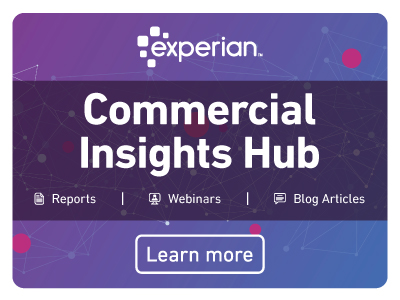All posts by Gary Stockton

Join Experian at #ITC2022 to learn to understand the mindset of the industry and learn about where the market is heading.
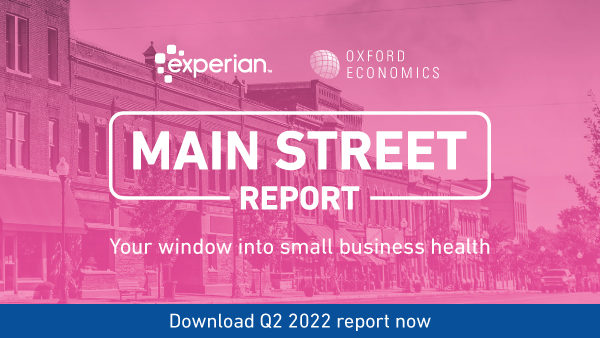
Experian and Oxford Economics have just released the Q2 Main Street Report. it offers a unique view of credit performance on millions of small businesses.
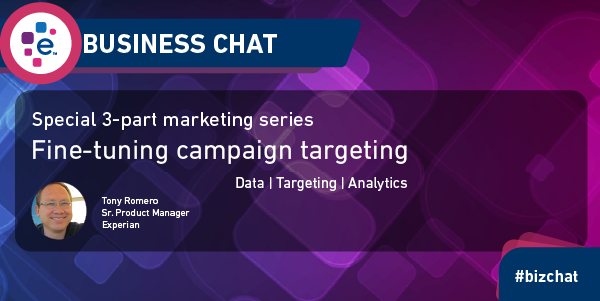
If you want to get the most out of your marketing campaigns, it's important that they are tailored for a specific audience. We invited Tony Romero on Business Chat to talk about part two of his three-part Sip and Solve webinar series focused on B2B marketing where he explains how segmentation and targeting can make all aspects (landing page or email) more effective by using industry SIC as well as NAICS codes. Look-a-like analysis CMO's challenged with restricted budgets Analyzing portfolio diversity and targeting minority-led, women-led businesses Profiling prospects with limited data attributes Watch Our Interview What follows is a lightly edited transcription of our talk. [Gary Stockton]: So in our last chat, we talked about maintaining robust marketing data to power effective campaigns and how clean data really helps businesses conduct effective marketing campaigns. This week, we switch gears to discuss the power of segmentation and targeting using industry SIC and NAICS codes to optimize your marketing budgets. So let's dive in. In our previous chat, we spoke about the changes that tech companies have enacted to make the job of targeting business prospects harder, but it's not game over for marketers. [Tony Romero]: No, definitely not. You know, it's really important to know that there's still a lot of a wealth of data out there that can be used to identify and segment target customers. You know, the first-party data obviously is really key, as well as being able to take information that may be spotty. If, for example, you only have a name or address, you can be able to through services like ours, be able to get a full, comprehensive set of data on that customer, both firmographic, demographic, and credit information, and then be able to use that to promote to customers. [Gary Stockton]: So can you share some examples of how Experian data can help marketers hone in on their target customer, for example, how SICs and NAICS codes can help? [Tony Romero]: Yeah, Gary, you're right. SIC and NAICS codes provide information about what industry the business is in. And so, by knowing that, you're able to target those consumers. So again, as I mentioned before, you can take a look at your existing customer base and find out who's your ideal target customer. And from that, then you can compare that to prospective businesses that look just like that. And that's what's called a lookalike analysis. And by using SIC and NAICS codes, you're able to use that to segment the market and then be able to promote effectively. And Gary, you also mentioned that with the economic state, CMOs have to watch their budgets and be as efficient as possible these days. So again, by doing very good segmenting of your target audience, you are making sure that your finance and financial output to a campaign are as efficient as possible. [Gary Stockton]: Excellent, regulators, they're focusing on diversity, equity, and inclusion. How can Experian help clients in that effort? [Tony Romero]: You know? Yeah. That's a very key point and definitely more than ever. It's important to focus on identifying your existing portfolio and seeing how many customers in your portfolio are minority-led or women-led businesses. So you can do benchmarking, you can see how you fare against other businesses in your market space. And that helps you to determine how much more do you need to market to these minority or women-led businesses. So what's number one is the benchmarking, but secondly, you need to be able to go out and look at your prospective target list and find out who are minority-led or women-led. And there, getting an indicator about a Woman-led or Minority-led business allows you to promote specifically to those types of businesses to help increase your portfolio. [Gary Stockton]: That's good. So if all I have is a name and an email address, and in a lot of cases, you know, if we're driving a newsletter, can I still profile this contact? Or are there other ways to do that with minimal info? [Tony Romero]: Yes, there is. You know, even just having a name and address is enough data to go through our type of service and be able to append all of the other information that we talked about, whether it's firmographic with SIC or NAICS codes, it could be demographic information where we look at the business and find out who the consumers that are tied to that business are? So that's called a B2C linkage. And from that now, you know who the actual individual is and go target those specific individuals. So that's also another key point to bring out [Gary Stockton]: Excellent stuff, Tony. Well, folks, if you enjoyed this chat and want to go a level deeper, don't miss Tony's campaign targeting Sip and Solve webinar - Fine Tuning B2b Campaign Targeting. He goes into greater detail on targeting B2B prospects, just click the image to be taken over to the recording.
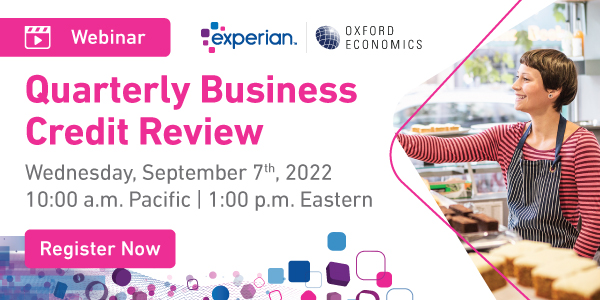
Mark your calendars! Experian and Oxford Economics will present key findings in the latest Main Street Report for Q2 2022 during the Quarterly Business Credit Review for Q2 2022. Kathy Bostjancic, Oxford's U.S. Chief Economist will share her take on Experian's most recent small business credit data and a macroeconomic outlook for the coming quarter. Brodie Oldham, Experian's V.P. of Commercial Data Science, will cover commercial credit trends. Q2 2022 Main Street Report The Q2 2022 Experian/Oxford Economics Main Street report is expected to release on August 23rd. If you are not already subscribed to thought leadership updates, be sure to sign up for updates on our Commercial Insights Hub. Mark Your Calendar Quarterly Business Credit Review Webinar Date: Wednesday, September 7th, 2022 Time: 10:00 a.m. (Pacific), 1:00 p.m. (Eastern) Why you should attend: Leading Experts on Commercial and Macro-Economic Trends Credit insights and trends on 30+ Million active businesses Ask our panel questions in real-time Industry Hot Topics Covered (Inclusive of Business Owner and Small Business Data) Commercial Insights you cannot get anywhere else Peer Insights with Interactive Polls (Participate) Discover and understand small business trends to make informed decisions Actionable takeaways based on recent credit performance Register To Attend
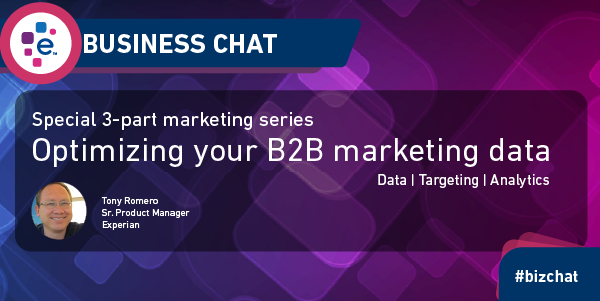
We're talking B2B marketing data hygiene with Tony Romero from our product team today on Business Chat.
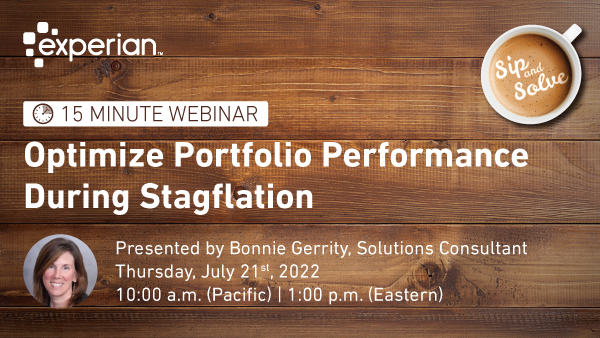
Stagflation can impact your commercial portfolio performance. We explore options credit departments can take to identify high-risk accounts.
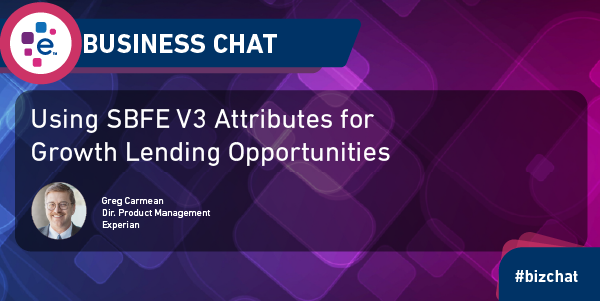
In our Business Chat, Greg Carmean shares how the latest SBFE attributes help lenders better assess small business risk and tap into growth opportunities.
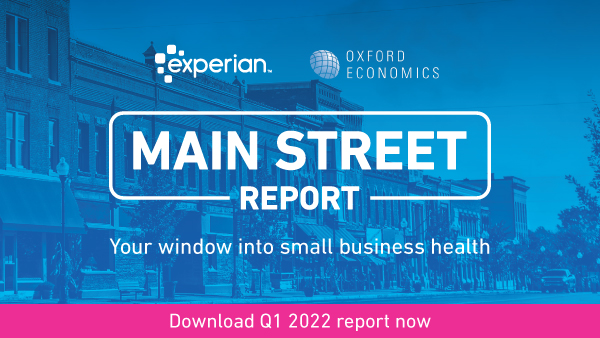
Experian and Oxford Economics have just released the Q1 2022 Main Street report, a window into the credit performance of small businesses complete with macroeconomic analysis. Highlights: The US economy contracted in Q1 for the first time since the pandemic-driven recession ended, but the domestic economy showed resilience in the face of Omicron, lingering supply constraints, and high inflation. Delinquency rates rose across the term periods; the 90+ days past due (DPD) climbed to 0.9 percent. Looking ahead, intensifying headwinds from more aggressive Fed tightening and tighter financial conditions will slow activity this year without stalling it. Download Q1 2022 Report Watch the Quarterly Business Credit Review Webinar Hear the experts from Experian and the lead economist from Oxford Economics unpack the latest Main Street Report. Watch the Quarterly Business Credit Review
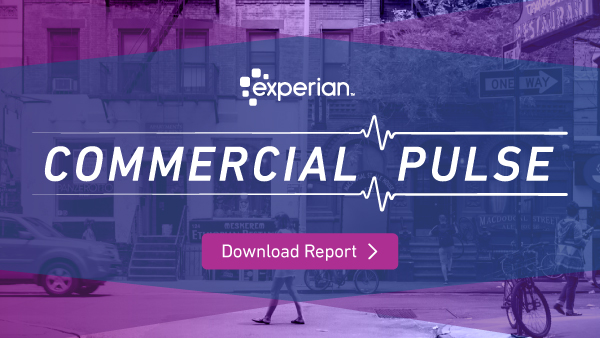
Interest rate hike, flat unemployment rate, strong job growth are just a few of the trends we are following in the Commercial Pulse Report.

